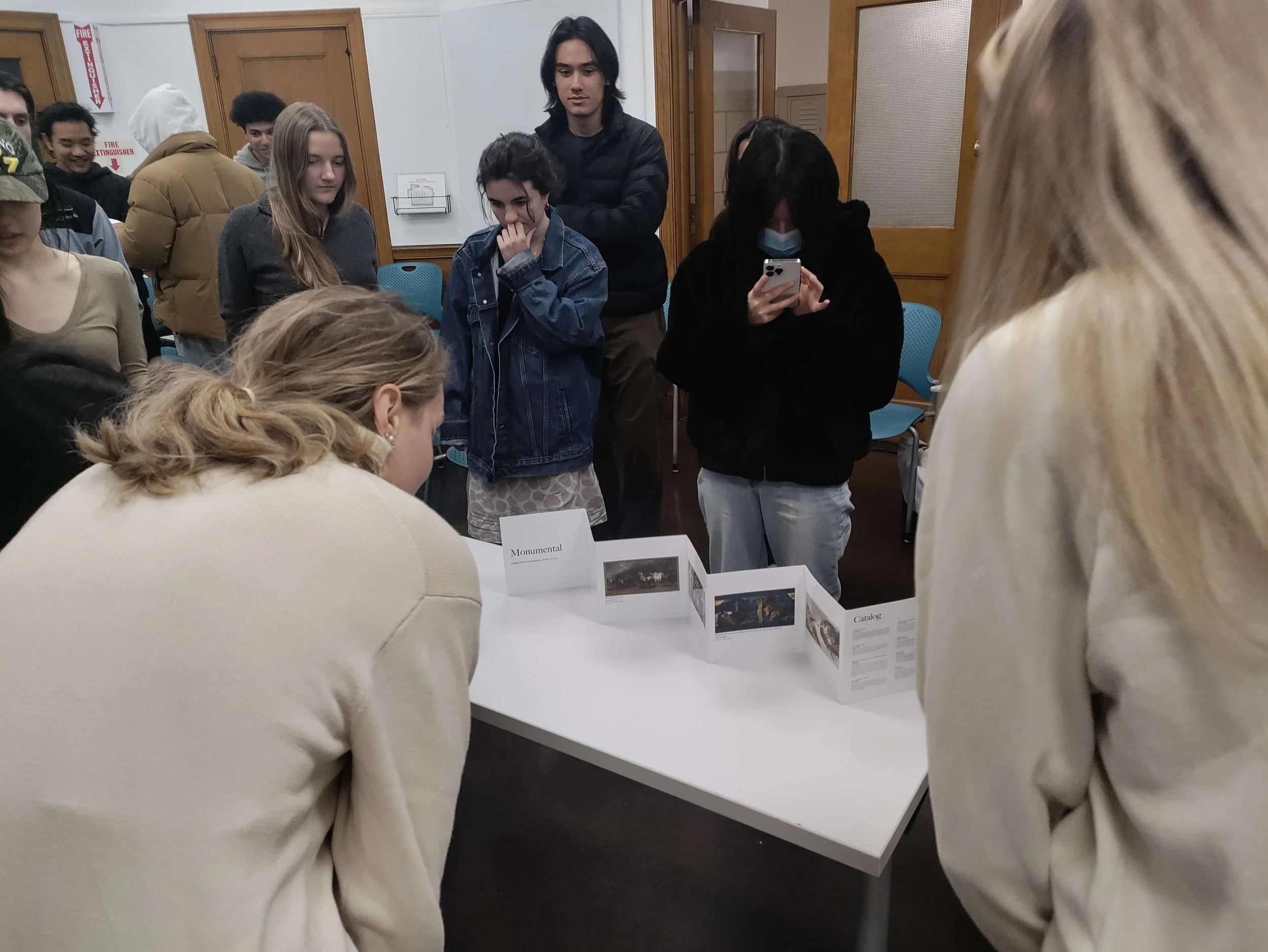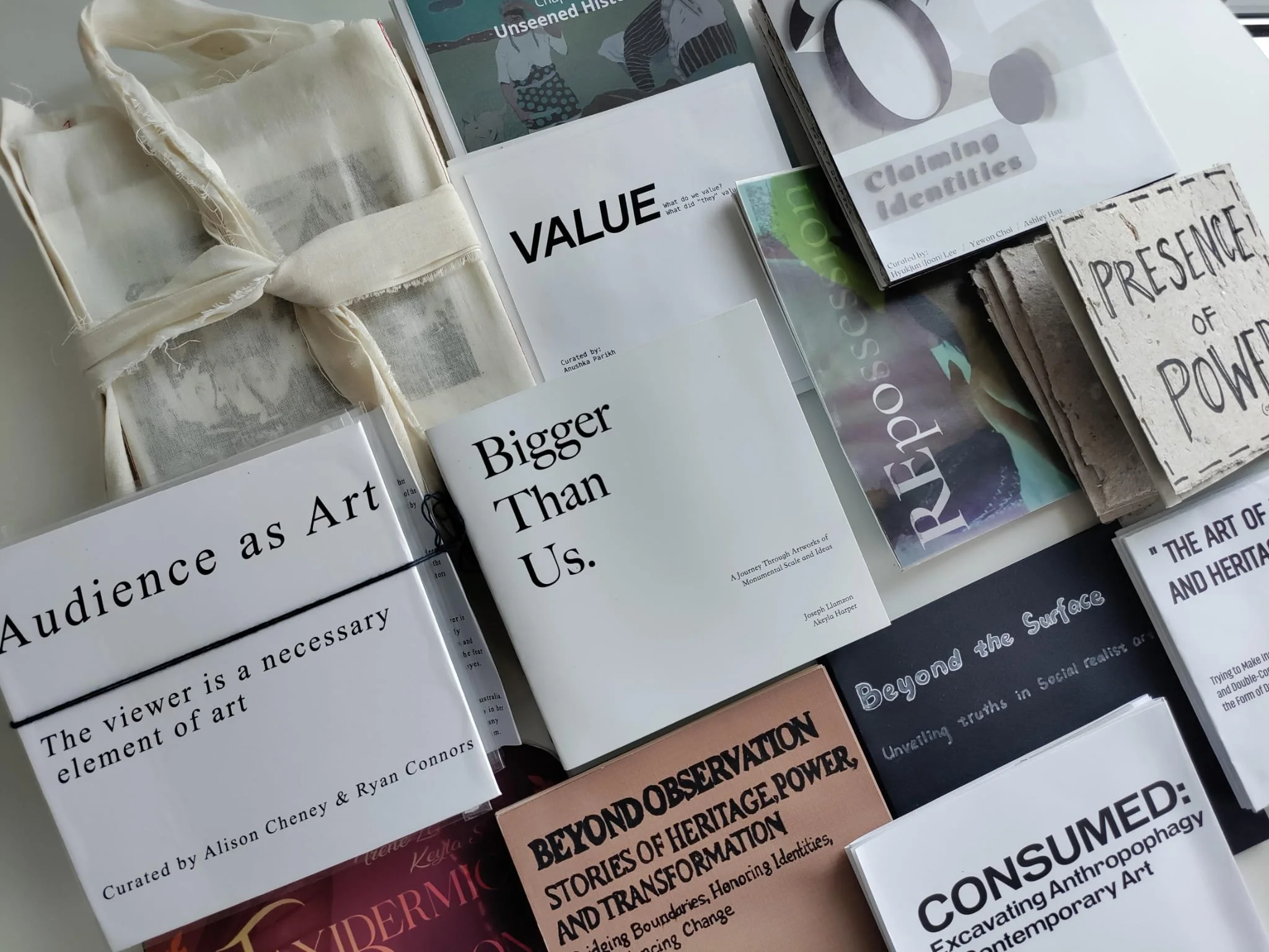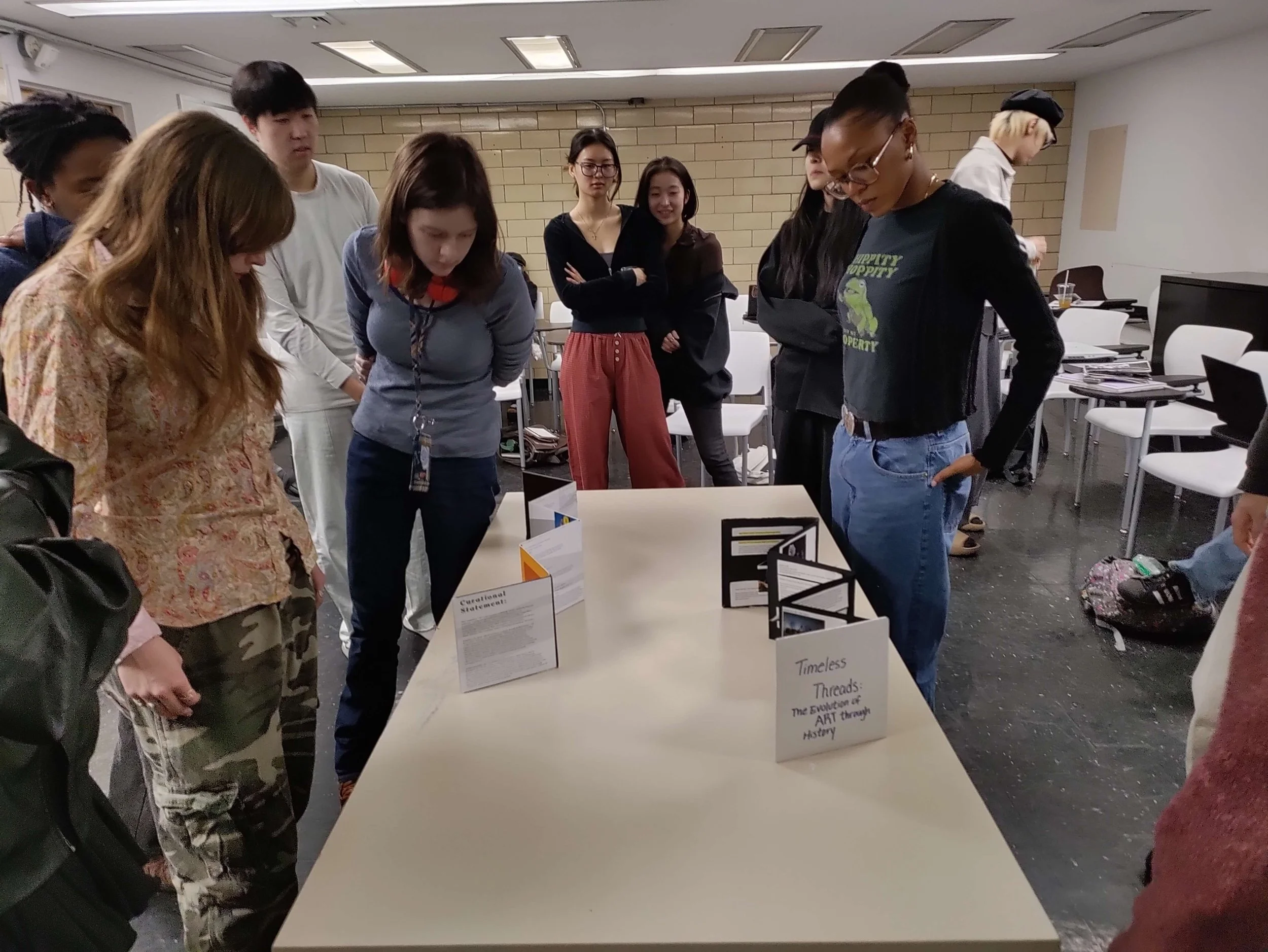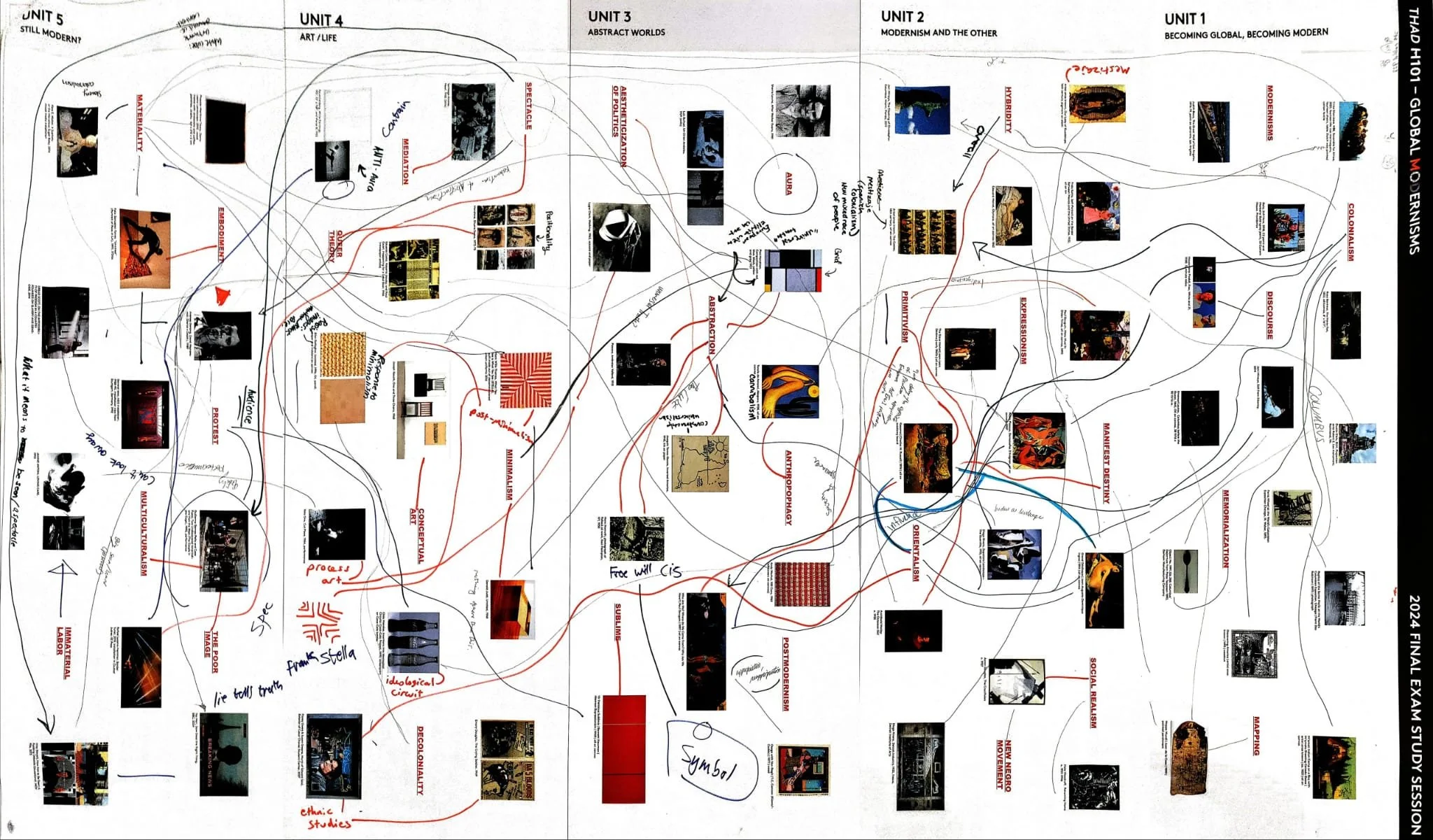Global Modernisms
Rhode Island School of Design
Department of Theory and History of Art & Design
Fall 2024 • Undergraduate Course
Teaching 2 sections, 20 students each
This course is designed by the Theory & History of Art & Design Department (THAD) to introduce students to global modern and contemporary art, architecture and design from 1750s-present. The course is fuelled by bi-weekly lectures delivered by various THAD professors accompanied by discussion sections run by various faculty. The lectures delivered by THAD’s professors address modernism as a global project, presenting several case studies from across the world that unfold to show how multiple kinds of modernism developed in different times and distant places. With an overarching course syllabus designed by the department, section instructors adapt the syllabus to their individual sections, designing unique activities and assignments to compliment the course’s themes. I was teaching two sections of this course, each with 20 students.
01 • Creative Lineages: A Triangulation
In this warm-up assignment, students were encouraged to investigate the intersecting histories that have fed their practice, both consciously and unconsciously. They did so by triangulating between three artefacts: 1) a work of their own, 2) a work that has inspired them in the past, 3) a piece of work that is entirely new to them but is stylistically similar to their own work. They were encouraged to map the similarities and differences across all three pieces in terms of both form and concept.
02 • Reconstructing the Argument
Students were tasked to write a brief essay reconstructing the argument from one of their class readings: “Why Have There Been No Great Women Artists” by Linda Nochlin (1971). The assignment was designed to help them recognize and appreciate the craft of academic writing and argument construction, to understand the nuances of citation, evidencing, structure, persuasive prose styles, and the difference between delivering opinions versus arguments.
03 • Investigating Celebrations
This assignment was inspired by the students’ reading of Michel-Rolph Trouillot’s essay “Good day, Columbus” that serves as a textual collage of all the forces and factors that have contributed to the phenomenon of Columbus Day. The students were asked to create a mixed-media collage conducting a similar microscopic investigation of a contemporary celebratory event. Their collages were supposed to reveal various factors that contributed to establishing and maintaining the legitimacy of the event, such as laws, public holidays consumer sales, scientific research, social media campaigns, political endorsements and more. Students chose to investigate everything from Halloween to graduation to the MET Gala to Batman Day.
04 • Intervening in the Image (à la Shey Rivera)
Inspired by the visual artwork of Providence artist Shey Rivera, this assignment required students to pick any artwork they’ve encountered from the lectures and then annotate and intervene directly upon it. Their intervention could take any form – drawing/painting/writing over the artwork, collaging over it, sticking post-its on it, cutting it up/rearranging it, digitally animating over it, etc – so long as the original artwork formed the basis of the piece. The intervention was meant to serve as a form of visual analysis, considering questions like: What’s missing from the image? What’s hidden? Invisibilized? What’s been distorted? What embedded concepts and histories are implied by the image? What does the image sanitize and how? What does it glorify/vilify? What do its formal properties convey?
05 • RISD Museum: Formal Analysis Paper
Prescribed by overarching course syllabus • Students had to select from a curated list of five objects on display at the RISD Museum and then write a brief paper analyzing the same. Their papers were required to conduct an in-depth formal analysis, interpret its conceptual dimensions and reflect on their own positionality in relationship to the artwork.
“The creation and then misalignment of the grid re-enforces the feeling of tension between stability and dynamism that is central to Nevelson’s work.”
“...by darkening the marble, it creates new relationships between light and shadow... It makes the two figures appear to emerge from the darkness, surrounded by it, rather than being placed “on top” of it.”
06 • The “Pop-Up” Exhibition
In their final assignment, students worked individually or in groups of 2-3 to produce an “exhibition” curating their own selection of artwork from among the many examples they’ve encountered throughout the lectures. Their exhibitions were presented in the form of accordion booklets and had to feature a theme, title and curatorial note along with an object catalog. The assignment was designed as a way to synthesize their understanding of concepts throughout the course and then present it through their own unique thematic lens.
Quizzes & Study Sessions
Prescribed by overarching course syllabus • The course also featured monthly quizzes and a final exam that tested students on course concepts and their ability to draw thematic connections between artworks introduced to them during the lectures. I was also involved in running two study sessions for the department to help students across sections prepare for the quizzes and final exam. The study sessions involved short hands-on exercises that helped students make connections between keywords and artworks from the lectures.
Collaborative worksheet from the pre-exam study session



